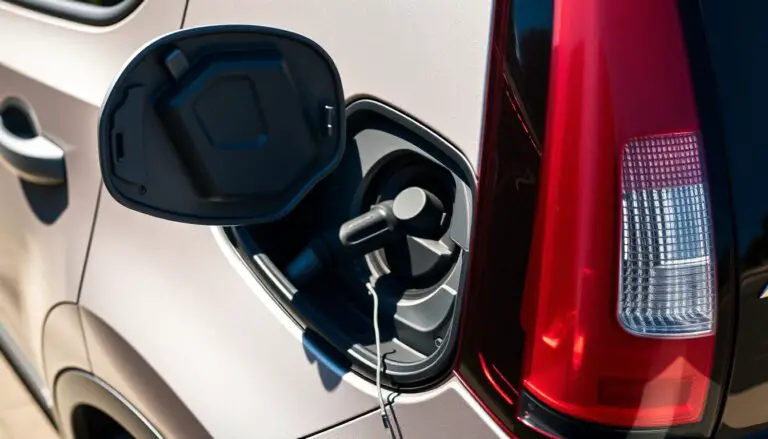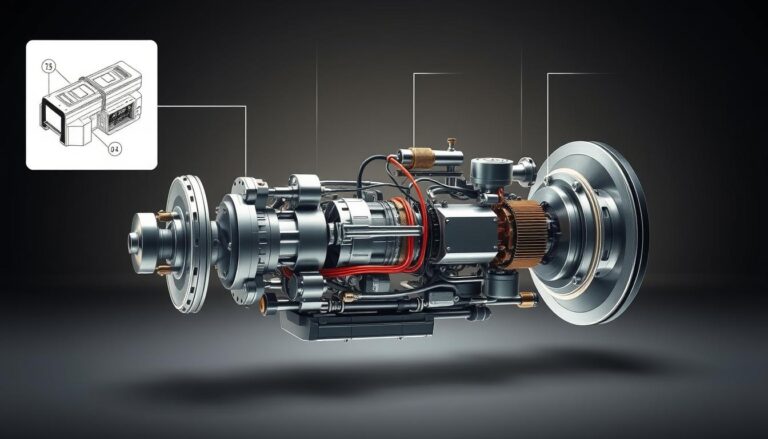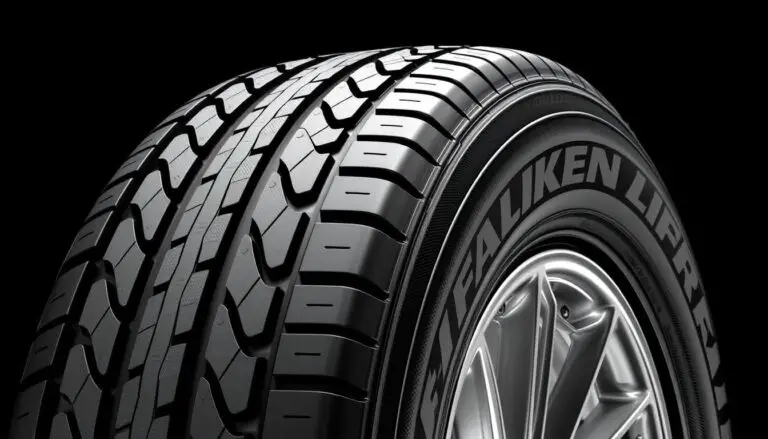The Tire Pressure Monitoring System (TPMS) is a critical safety feature in modern vehicles, alerting drivers to underinflated tires and potential hazards. However, when the TPMS sensor battery dies or the system needs recalibration, a reset is necessary to maintain optimal performance.
Resetting the TPMS can seem daunting, but various techniques can simplify the process. For instance, understanding how to replace the TPMS battery, as discussed in our guide on replacing tire pressure sensor batteries, is essential for maintaining the system’s accuracy.
Key Takeaways
- Understanding the importance of TPMS and its reset techniques.
- Learning how to replace TPMS sensor batteries for optimal performance.
- Exploring various methods to reset the Tire Pressure Monitoring System.
- Recognizing the role of TPMS in vehicle safety.
- Discovering the steps to recalibrate the TPMS after a reset.
Understanding TPMS and Why Resets Are Necessary
Understanding the Tire Pressure Monitoring System (TPMS) and its reset procedures is crucial for vehicle safety and performance. The TPMS is an electronic system designed to monitor the air pressure inside a vehicle’s tires.
What Is a Tire Pressure Monitoring System?
A Tire Pressure Monitoring System (TPMS) is a vital safety feature in modern vehicles, comprising sensors in each tire that transmit data to the vehicle’s onboard computer. This system alerts drivers to underinflated tires, helping prevent tire failures and improve fuel efficiency.
Common Reasons for TPMS Resets
Several scenarios necessitate a TPMS reset, including:
- Rotating tires to ensure even wear
- Replacing one or more tires or wheels
- Adjusting tire pressure, especially when changing seasons
- Replacing TPMS sensors due to battery depletion or sensor failure
Benefits of Properly Functioning TPMS
A properly functioning TPMS offers numerous benefits, including:
- Enhanced safety through the prevention of tire-related accidents
- Improved fuel efficiency due to optimal tire pressure
- Extended tire lifespan through consistent monitoring and maintenance
By understanding and maintaining the TPMS, vehicle owners can ensure their safety on the road and optimize their vehicle’s performance.
TPMS Reset: A Look Into the Tried and Tested Methods
A TPMS reset is a straightforward process once you understand the type of TPMS your vehicle uses and the appropriate reset method. The Tire Pressure Monitoring System is a critical safety feature in modern vehicles, and resetting it correctly is essential for its proper functioning.
Direct vs. Indirect TPMS Systems
Vehicles are equipped with either direct or indirect TPMS. Direct TPMS uses sensors inside the tires to measure pressure, while indirect TPMS relies on the vehicle’s ABS and speed sensors to estimate tire pressure. Understanding which system your vehicle has is crucial for a successful reset.

When to Perform a TPMS Reset
A TPMS reset is typically required after tire maintenance, such as rotation or replacement, and when the system indicates a problem. It’s also necessary when the vehicle’s battery is replaced or when the TPMS sensors are replaced or reconfigured.
Tools You Might Need
The tools needed for a TPMS reset can vary. Some vehicles may require a TPMS reset tool or scanner, while others can be reset using the vehicle’s onboard computer. It’s essential to consult your vehicle’s manual to determine the specific tools required.
Safety Precautions Before Starting
Before attempting a TPMS reset, ensure you are in a safe environment, away from traffic. Also, make sure you have the correct information and tools for your specific vehicle. Incorrectly resetting the TPMS can lead to system malfunctions or failure to detect underinflated tires.
| TPMS Type | Reset Method | Tools Required |
|---|---|---|
| Direct TPMS | Using TPMS reset tool | TPMS reset tool, vehicle’s manual |
| Indirect TPMS | Through vehicle’s onboard computer | Vehicle’s manual, possibly a code reader |
The Auto-Relearn Method
Resetting your TPMS can be simplified using the auto-relearn method, a feature available in many modern vehicles. This method allows drivers to reset their TPMS without the need for specialized tools, making it a convenient option for many.
Vehicles Compatible with Auto-Relearn
The auto-relearn method is supported by a wide range of vehicles, including many models from domestic, Asian, and European manufacturers. To determine if your vehicle is compatible, you can consult your owner’s manual or contact the manufacturer’s customer support.
Step-by-Step Auto-Relearn Process
The auto-relearn process involves several steps that must be followed carefully to ensure a successful reset.
1. Preparation Steps
Before starting the auto-relearn process, ensure that your vehicle’s tires are inflated to the recommended pressure. You should also check that the TPMS warning light is not illuminated due to a fault other than low tire pressure.
2. Driving Pattern Requirements
To initiate the auto-relearn process, you may need to follow a specific driving pattern as outlined in your vehicle’s owner’s manual. This typically involves driving at a certain speed for a specified duration.
3. Verification Process
After completing the driving pattern, the TPMS system will automatically relearn the new tire pressure values. You can verify that the process was successful by checking that the TPMS warning light has turned off.

Troubleshooting Auto-Relearn Issues
If the auto-relearn process is not successful, there are several troubleshooting steps you can take. First, ensure that your tires are properly inflated and that there are no issues with the TPMS sensors.
| Issue | Troubleshooting Step |
|---|---|
| TPMS warning light remains on | Check tire pressure and ensure it matches the recommended levels. |
| Auto-relearn process fails | Consult the owner’s manual or contact customer support for guidance. |
Manual TPMS Reset Procedures by Vehicle Type
Manual TPMS reset procedures are not universal and depend on the vehicle’s make and model. Different manufacturers have their own protocols for resetting the Tire Pressure Monitoring System.
Domestic Vehicles Reset Methods
For domestic vehicles, the reset process can vary significantly. Here are the procedures for some prominent models:
Ford Models Reset Procedure
For Ford vehicles, the TPMS reset is typically done through the vehicle’s information display. To reset, navigate to the “Settings” menu, select “Tire Pressure,” and then choose “Reset.” Follow the on-screen instructions to complete the process.
GM Models Reset Procedure
General Motors vehicles often require a TPMS reset using a scan tool. The process involves accessing the TPMS menu through the scan tool and following the prompts to relearn the tire pressure sensors.
Chrysler Models Reset Procedure
Chrysler vehicles usually have a TPMS reset button. Press and hold the button until the TPMS light blinks three times, indicating the system is in relearn mode. Then, drive the vehicle at a speed above 15 mph to complete the reset.
Asian Vehicles Reset Methods
Asian vehicle manufacturers also have their own TPMS reset procedures:
Toyota Models Reset Procedure
For Toyota models, the TPMS reset is done by initializing the system through the vehicle’s multi-information display. Navigate to “TPMS Setup” and follow the on-screen instructions.
Honda Models Reset Procedure
Honda vehicles require a TPMS reset using a specific sequence of button presses on the dashboard. Consult the owner’s manual for the exact sequence.
Nissan Models Reset Procedure
Nissan models often have a TPMS reset procedure that involves driving the vehicle at a certain speed for a specified duration. Check the owner’s manual for details.
European Vehicles Reset Methods
European vehicle manufacturers have their own approaches to resetting TPMS:
BMW Models Reset Procedure
For BMW models, the TPMS reset is typically done using the iDrive system. Navigate to “Vehicle Settings,” then “Tire Pressure Monitoring,” and follow the prompts.
Mercedes Models Reset Procedure
Mercedes-Benz vehicles require a TPMS reset using the COMAND system. Access “Vehicle Settings,” then “Tire Pressure,” and follow the on-screen instructions.
Volkswagen Models Reset Procedure
Volkswagen models often have a TPMS reset procedure that involves accessing the “Settings” menu through the infotainment system and selecting “Tire Pressure Monitoring.”
It’s essential to consult the vehicle’s owner’s manual or contact a dealership for specific instructions, as procedures may vary even within the same brand.
Using TPMS Reset Tools and Scanners
The process of resetting a TPMS can be simplified with the use of specialized tools and scanners. These devices are designed to communicate with your vehicle’s TPMS, allowing for efficient resetting and diagnosis.
Popular TPMS Tools on the Market
Several TPMS reset tools are available, catering to different needs and budgets. Some of the most popular include:
- Autel MX-Sensor: Known for its versatility and compatibility with a wide range of vehicles.
- TPMS Tool by OrangeA: Offers a user-friendly interface and supports multiple programming functions.
How to Use a TPMS Scanner
Using a TPMS scanner involves a few straightforward steps:
Basic Scanner Operation
First, connect the scanner to your vehicle’s OBD-II port. The scanner will then communicate with the TPMS system, allowing you to read sensor data and perform resets.
Programming New Sensors
When replacing TPMS sensors, you’ll need to program the new units using your scanner. This involves entering the sensor IDs and ensuring they are recognized by your vehicle’s system.
Cost-Benefit Analysis of Professional Tools
Investing in a professional TPMS reset tool can save time and money in the long run. While the initial cost may seem high, the ability to perform resets and diagnose issues independently can be cost-effective.
“The right TPMS tool can make a significant difference in maintaining your vehicle’s safety and efficiency.”
When to Seek Professional Help
If you’re unsure about using a TPMS reset tool or if your vehicle’s TPMS system is complex, it’s advisable to seek professional help. Certified mechanics have the training and equipment to handle TPMS resets and repairs efficiently.
Conclusion
Understanding and correctly performing TPMS resets is crucial for maintaining optimal vehicle performance and safety. The techniques discussed in this article provide a comprehensive guide to TPMS reset methods, including the auto-relearn method, manual reset procedures, and the use of TPMS reset tools and scanners.
By mastering these TPMS reset techniques, vehicle owners can ensure their Tire Pressure Monitoring System functions accurately, enhancing overall vehicle safety and efficiency. Whether you’re dealing with a domestic, Asian, or European vehicle, the information provided will help you navigate the process with confidence.
Properly functioning TPMS is essential for maintaining the right tire pressure, which in turn affects fuel efficiency, tire longevity, and vehicle handling. By applying the TPMS reset techniques outlined in this article, you can enjoy a smoother, safer driving experience.
FAQ
What is TPMS and why is it important?
TPMS, or Tire Pressure Monitoring System, is an electronic system designed to monitor the air pressure inside a vehicle’s tires. It’s crucial for maintaining proper tire pressure, which affects vehicle safety, fuel efficiency, and tire longevity.
How do I know if my vehicle’s TPMS needs to be reset?
You may need to reset your TPMS if the system is malfunctioning, or if you’ve made changes to your vehicle’s tires or wheels. Common signs include a illuminated TPMS warning light on your dashboard or inconsistent tire pressure readings.
Can I reset my TPMS myself, or do I need to visit a professional mechanic?
While some TPMS resets can be done independently, others may require specialized tools or expertise. It’s recommended to consult your vehicle’s owner’s manual or contact a professional mechanic if you’re unsure.
What’s the difference between direct and indirect TPMS systems?
Direct TPMS systems use sensors inside the tires to measure pressure, while indirect systems use the vehicle’s ABS and speed sensors to estimate tire pressure. Understanding the type of TPMS your vehicle has is essential for proper reset procedures.
Are TPMS reset tools and scanners necessary for all vehicles?
Not all vehicles require TPMS reset tools or scanners, but they can be useful for certain models or when replacing sensors. Popular tools include Autel’s MX-Sensor and Bartec’s TPMS tools.
How often should I check my tire pressure?
It’s recommended to check your tire pressure at least once a month, as well as before long trips. Proper tire pressure can improve fuel efficiency, handling, and safety.
Can I use a TPMS reset tool on multiple vehicles?
Some TPMS reset tools are designed to be compatible with multiple vehicle makes and models, while others are specific to certain manufacturers. Always check the tool’s compatibility before use.
What’s the auto-relearn method, and which vehicles support it?
The auto-relearn method is a process that allows certain vehicles to automatically relearn the TPMS sensors after a reset. This feature is available on various models from manufacturers like Ford, GM, and Toyota.


